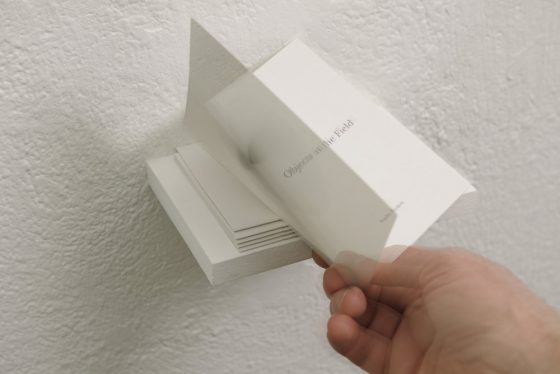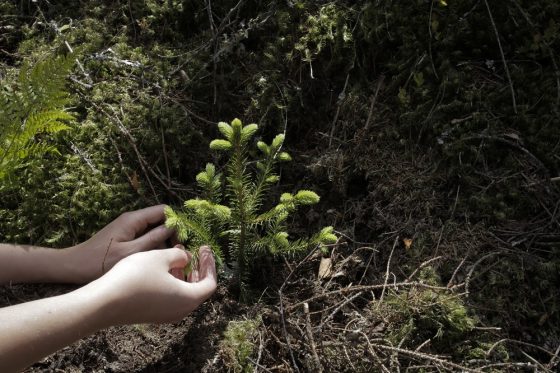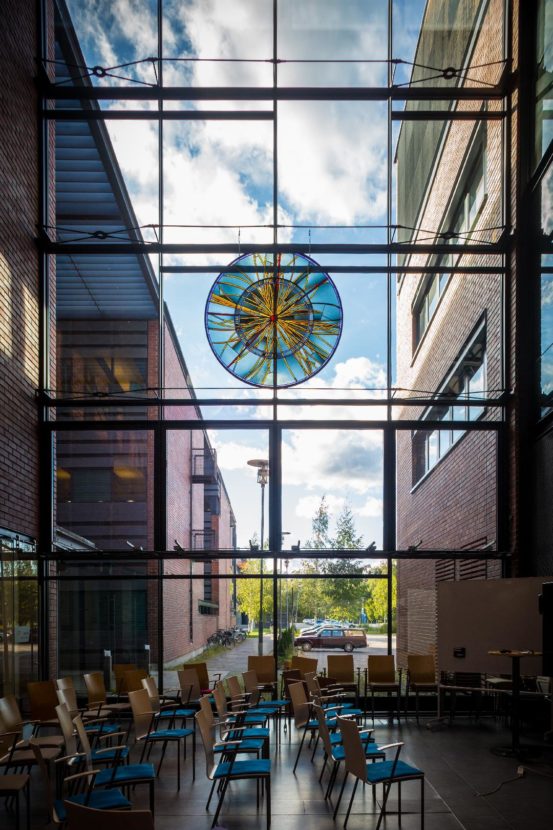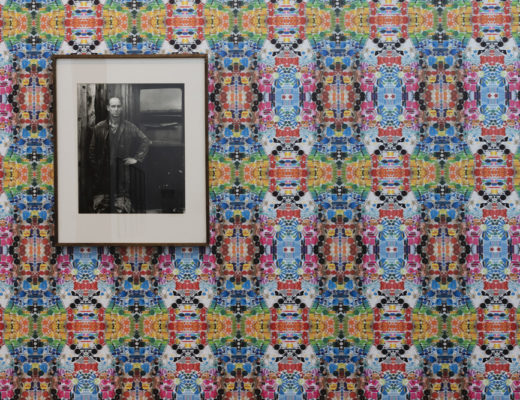This series of four conversations was originally published on Roman Road Journal, 2018
When creative practitioners – and that includes artists, writers, scientists, academics etc – start to produce work that challenges existing disciplinary frameworks, certain questions always arise: where should this new work go? What should we call it? Who will offer it a home?
In the case of artists engaging with science and technology, these questions are both literal and metaphorical. It is not only a question of funding artists through new commissions or acquisitions but also of providing support – logistical, administrative, professional, emotional. In the art world, curators, gallerists, commissioning agencies, and collectors all have roles to play. So do critics: how should such work be written about and in which publications? An interested public may wish to know where to view this kind of art.
Sometimes art that engages with science can seem to fit easily into pre-existing art world structures – in which case, maybe what seemed new and different was never really that different after all. But at other times, those in this field seem at risk of delimiting their own work behind new words and walls and failing to speak to wider art worlds that they fear won’t listen.
Should interdisciplinary work strive to efface existing disciplinary boundaries or carve out new ones?
CRYSTAL BENNES: If I were to begin by making an overly simplistic distinction, it would be between two ways of making a career as an artist. On the one hand, there’s the commercial path, where artists make work that can be sold through commercial galleries and art fairs. On the other, there’s the non-commercial trajectory, which is where most artists engaging with science tend to find themselves. Just as the commercial art world can seem completely impossible to navigate sometimes, so too with the non-commercial art world. Both involve occasionally impenetrable processes of gate-keeping. As a non-commercial artist you have to figure out what works best for you – it might involve grants and other public funding or working with institutions or staying close to academia. Most do a mix of these things.
TOM JEFFREYS: What seems interesting about that distinction is the extent to which artists must either carve out a path that fits their work or adjust their work to fit within pre-existing paths.
CB: Exactly. Broadly speaking, artists showing in commercial spaces tend to be more artefact-driven in terms of what they produce. We discussed research in more depth last time, but however much research an artist may carry out, when it comes to showing in a commercial gallery, the chances are that the work will be formally recognisable as a painting, photograph, sculpture, film or installation and the research itself will be far less visible. In more academic spaces, or spaces with a more educational or scientific agenda, the research may well be much more prominent through things like wall texts or information sheets.

TJ: There are other interesting differences too. Most commercial galleries have been specifically designed by architects as spaces in which to show contemporary art. But many institutions showing art-science work were never really conceived to do so. They are often housed in the lobby or by the cafe of much bigger scientific or educational institutions. Some exhibitions have to be easily put away so the area can be used for other events. Some are spaces that people walk through rather than visit. In a way this means they can appeal, almost by stealth, to new, unsuspecting audiences. But curators and artists have to be careful about the kinds of work that can succeed in such contexts, and how to present them.
CB: Of course, there are exceptions.
TJ: For sure. Again, touching on the last conversation, I’ve seen exhibitions by Sophy Rickett, an artist whose work I love, both at a Mayfair commercial gallery (Camilla Grimaldi) and at a big public institution (Birmingham Library). Although they covered different territory, the two shows were structurally similar: both consisted of photographic series, exhibited with little or no wall text, but supplemented by fascinating accompanying booklets that delved into the research process in an idiosyncratic manner.
CB: Katie Paterson would be another example of an artist who has been able to successfully straddle the divide. Her ‘Future Library’ project, for example, is a very conceptual, large-scale institutional kind of work – funded by a national library. But she also produces smaller-scale, commercially agreeable things that can be sold through galleries like Haunch of Venison (before Christie’s liquidated it), James Cohan or Ingleby.
TJ: What Katie Paterson’s career shows is that there definitely are commercially-minded galleries championing artists whose work engages with science in various ways. In particular, there are some really interesting galleries with an emphasis on new media and digital technologies: in London, the likes of Arebyte, IMT, or Gossamer Fog. Between 2012 and 2017, Carroll Fletcher put on some great exhibitions too, with artists like Alastair Hopwood and Rafael Lozano-Hemmer.

CB: It’s such a shame that Carroll Fletcher closed. I remember a particularly smart solo show by Natascha Sadr Haghighian there in 2012 which exemplified the gallery’s approach to foregrounding work by artists coming at science and tech in interesting, often oblique ways. Downstairs there was a piece about the difference between mental images and optical vision which included an eyepiece from a microscope, but it was accompanied by a booklet including a conversation between the artist and Evelyn Fox-Keller, professor of History of Science at MIT. It was really a lovely pairing.
TJ: The role of galleries like that is actually really important for lots of different reasons. One of them is because there is such a close link between the kinds of works shown in commercial galleries and the kinds of works written about in the art press. A lot of people I know working in the art-science field feel that the influential art publications don’t pay them enough attention. And if that’s true, it’s possibly because those magazines are closely aligned with the commercial gallery scene, which, as we’ve said, is not always so fond of this kind of research-heavy work.
Earlier this year I wrote an article about art-science collaborations for Frieze and more people have got in touch with me about it than pretty much anything else I’ve ever written. I think that reflects two things: firstly, that there is a growing appetite for this kind of work; and, secondly, that it is not being written about enough outside of academic journals.
CB: I think also the art press can struggle with this kind of work because they see it as interpretation of science, rather than art in its own right…although in many cases, that’s probably true.
TJ: On the flip side, I remember writing some exhibition reviews a few years ago for New Scientist, and the editors were adamant that their readers just wanted the most reductive descriptions of the work – how big it was, what it was made of, and what scientific facts it helped to communicate. They were absolutely not interested in whether it succeeded or failed as a work of art.
CB: Yes, there’s something rather depressing about that. Perhaps someone ought to launch a new publication…
TJ: Good idea! Although, in a way, that might further contribute to the way that this kind of work sometimes gets segregated, or segregates itself, as somehow different from other approaches to art.
CB: True. I suppose, as with some of the shows we mentioned earlier, it’s often in exhibition booklets written by the artists or their close collaborators that the best writing is found.
TJ: And also in catalogues commissioned by galleries and institutions. As a writer, that’s often where I feel enabled to write in a way that is maybe looser or more tangential than I would do for an art magazine. The catalogue creates a context in which a writer can feel that bit more free.
CB: That sense of freedom is hugely important for artists too…
TJ: …and good commercial galleries can help with that, I think. It’s not just about selling objects to collectors and getting some press coverage; it involves developing ideas, placing work in museums, facilitating collaborations, opening certain institutional doors etc. Gallerists are not simply gatekeepers. One example in this art-science field is Robert Devcic of GV Art, who had a gallery in Marylebone between 2008 and 2014, and now focuses on his company’s role as curatorial producers and art agents. I’m biased because I’ve written about GV Art exhibitions, curated a show there and Robert is a friend, but one of the things I learnt from him is the role that gallerists can play in the careers of artists, in helping them to find a home or multiple homes for their work and for their ways of working.
Of course, it’s not always plain sailing, and different roles must be clearly demarcated, but the role of the gallerist can be especially important for artists whose work relies upon productive collaborations or which doesn’t necessarily fit within pre-existing disciplinary fields. This part of the gallerist’s job is something that often gets overlooked.
CB: Completely. And what has become clearer to me as I’ve committed to the non-commercial art career path is that, without the support of a gallery, it’s all on you. Every decision, funding application, logistical arrangement, institutional battle. If there is any support provided, it only really lasts until the project or exhibition or whatever is finished.
TJ: In an ideal world, artists with a good commercial gallery are spared much of that. In theory that leaves them freer to get on and make work.
CB: I’m not sure though. The question of freedom is such an interesting one. For example, I’m just about to go to CERN for a week of initial meetings, with a view to a longer-term collaboration. I think this is the first time that I’ve been invited by an institution rather than approaching them for specific information. Usually, I know what I want and I go get it and I feel very little anxiety about that. But when they invite you, managing and negotiating the relationships with collaborators feels completely different. There is pressure where there wasn’t before.
TJ: It’s funny because people usually think of artists at commercial galleries feeling under pressure to keep making the same kinds of commercially successful works, to show all the time, to hire assistants or technicians and keep them employed, but as you say there are pressures and constraints on non-commercial artists too. Creative freedom always exists within some kind of framework.
CB: Maybe. In an institutional context, art-science work is often wrapped up in questions of mediation and interpretation, which we discussed in the first conversation. But when I was making the stained-glass window, it never once crossed my mind to think about those kinds of questions: would CERN like it, would it be disappointing to them? But when you go in with an invitation you do think about those things.
TJ: Thankfully, the window has now found a home…
CB: Yes and it’s the perfect place for it – in the Computer Science faculty of Aalto University in Helsinki. Despite widespread interest, it was a difficult work to place. But I’m sure that’s as much because it’s a huge, fragile object as any difficulty with the subject matter. Nevertheless, it has a permanent home and that’s a relief. Having gone through that process, though, I think it will change the way I make work. I’m now thinking much more about where a particular piece might end up, which institution or festival might be interested in it, or even whether I need to make new stuff at all. Maybe making objects isn’t always the best way to express research. So, I’m starting to look more at making that doesn’t actually make anything, ridiculous though that may sound.
TJ: So that it doesn’t just end up in a warehouse in Switzerland or some museum stores, never to be seen again.
CB: Exactly. When your work is “about” something, not simply an outpouring of feeling, you really want it to find a good home, and to be part of an ongoing conversation, even if that conversation is with quite a small community.

FURTHER READING
Harriet Hawkins, Art-Science and (Re)Making Worlds in Recomposing Art and Science, 2016
Assimina Kaniari, Curatorial Style and Art Historical Thinking, 2014
Nicola Triscott, Art and Intervention in the Stewardship of the Planetary Commons, 2017




